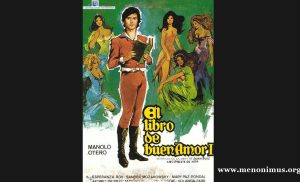El libro de buen amor by Juan Ruiz— A Review
El libro de buen amor
El libro de buen amor by Juan Ruiz— A Review
“El libro de buen amor,” penned by Juan Ruiz, the “Arcipreste de Hita,” stands as a remarkable literary creation that seamlessly intertwines various literary styles and thematic threads to offer readers a captivating insight into the complexities of love and morality. This work, often referred to as the “Book of Good Love,” showcases a blend of epic, lyrical, and didactic elements that not only demonstrate Ruiz’s literary prowess but also provide a window into the cultural and moral values of medieval Spain.
Narrative and Structure:
The structure of “El libro de buen amor” is reminiscent of a literary collage, featuring diverse narrative voices, poetic styles, and even humorous anecdotes. The narrative unfolds as a fictional autobiography of the Arcipreste himself, recounting his various romantic escapades and encounters, while also offering moral lessons and reflections. The diverse structure of the work, which combines stories, allegories, dialogues, and lyric poetry, reflects the eclectic nature of the medieval literary tradition.
Themes of Love:
At its core, the work delves into the multifaceted concept of love. The protagonist’s interactions with women, such as Lady Holy Church and Lady Reason, serve as allegorical representations of different forms of love and desire. The Arcipreste’s encounters oscillate between the carnal and the spiritual, symbolizing the tension between earthly passion and divine devotion. This exploration of love is both romantic and didactic, prompting readers to contemplate the varying shades of human affection.
Morality and Didacticism:
Embedded within the narrative are clear didactic intentions, as Ruiz employs his storytelling to impart moral lessons and ethical guidance. Through the trials and tribulations of the Arcipreste, readers are exposed to the consequences of moral transgressions and the rewards of virtuous conduct. The work’s moralistic undertones aim to strike a balance between earthly desires and spiritual obligations, reflecting the societal norms and religious values of the time.
Satire and Humor:
Ruiz masterfully infuses his work with satire and humor, offering a lighthearted perspective on the societal norms and religious practices of medieval Spain. The inclusion of comedic episodes and witty dialogues not only serves as a source of entertainment but also as a subtle critique of the hypocrisy and contradictions within the prevailing cultural milieu.
Language and Style:
The linguistic richness and complexity of “El libro de buen amor” contribute to its enduring appeal. The Arcipreste’s dexterity in manipulating language, employing rhymed verses, rhythmic patterns, and inventive metaphors, showcases his skill as a wordsmith. The combination of Latin, Spanish, and regional dialects adds layers of linguistic texture to the narrative, creating a vivid portrayal of medieval linguistic practices.
Cultural Significance:
The work is an invaluable artifact that provides insights into the socio-cultural fabric of medieval Spain. It reflects the interplay between religious devotion and secular desires, the tensions between courtly love and religious asceticism, and the evolving role of literature in shaping societal values.
Conclusion:
“El libro de buen amor” by Juan Ruiz, the “Arcipreste de Hita,” is a literary gem that seamlessly weaves together diverse literary styles and thematic elements. Through its exploration of love, morality, satire, and linguistic artistry, the work transcends time, offering readers a glimpse into the complexities of human nature and the cultural landscape of medieval Spain. Ruiz’s ability to balance didacticism with entertainment underscores the enduring relevance of this masterpiece, making it a must-read for those seeking to delve into the intricate tapestry of medieval literature and its portrayal of love and morality. 0 0 0.
El libro de buen amor
N.B. The article originally belongs to the book entitled ‘The Reviews of Epic Literature Around the World‘ by Menonim Menonimus.
You May Like:











